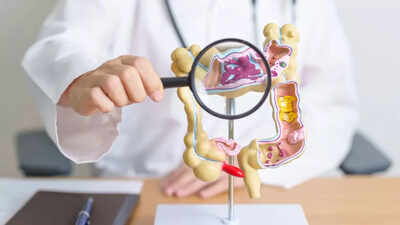What’s happening to young Americans’ guts? Dangerous colon disease on the rise |

A comprehensive analysis has found a troubling surge in colon disease cases among young adults in the United States. The analysis, led by researchers from UCLA and Vanderbilt University, found a 52% increase in complicated cases of diverticulitis among younger Americans. The findings of the analysis are published in the journal Diseases in the Colon & Rectum.
What is diverticulitis ?

Diverticulosis is a condition that occurs when small pouches, or sacs, form and push outward through weak spots in the wall of your colon, according to NIH.
When these small pouches, diverticula in the large intestine, become inflamed, it leads to diverticulitis, a digestive condition. This condition can come on suddenly and may lead to serious complications. It can lead to abdominal pain, bloating, bleeding, constipation, and diarrhea, among other symptoms.
Alarming rise in severe diverticulitis among younger Americans

The analysis of over 5.2 million hospitalizations found an sharp spike in severe diverticulitis among Americans younger than 50. The researchers reviewed hospital admissions for adult diverticulitis patients in the U.S. from 2005 to 2020. They found that the proportion of younger patients among those admitted with complicated diverticulitis, a subtype of diverticulitis involving abscesses, perforations, or other serious complications, increased from 18.5% to 28.2%. This is a 52% relative increase. The researchers noted that these findings point to a growing public health concern for younger Americans, with this population having experienced similar increases in colorectal cancer diagnoses.“We’re seeing a significant shift in who is being hospitalized for severe diverticulitis. This condition was traditionally thought of as a disease of older adults, but our data shows that younger Americans are increasingly affected, and often with more complicated presentations,” Shineui Kim, first author and a fourth-year medical student at the David Geffen School of Medicine at UCLA. Diverticulitis has been considered more common among older adults and rare in people under 40. However, the UCLA analysis of the National Inpatient Sample, the largest publicly available all-payer inpatient healthcare database in the United States, hints at a changing trend.
What did they find?

The researchers noted that of the 5.2 million patients hospitalized for diverticulitis between 2005-2020, about 16% or 837,195 were classified as ‘early-onset’ cases, which means occurring in patients younger than 50 years old. Among them, the number of people admitted to the hospital for complicated diverticulitis increased from 18.5% to 28.2%.This represents a substantial disease burden in a demographic that has historically been at lower risk, Kim said. Though there is a sharp surge in complicated cases, treatment strategies have evolved. This is why the proportion of younger patients requiring colectomy to surgically remove part of the colon decreased from 34.7% to 20.3% during the study period. When compared to older patients, younger patients had lower mortality rates, shorter hospital stays (0.28 days less on average), and lower hospitalization costs ($1,900 less per admission). However, the younger patients were more likely to require intervention. They had 29% higher odds of needing a colectomy and 58% higher odds of requiring percutaneous drainage, compared to their older counterparts.“While younger patients generally have better survival outcomes and shorter hospitalizations, they’re paradoxically more likely to need invasive interventions. This suggests their disease may be more aggressive or that treatment approaches differ based on patient age and overall health status,” Kim said.
The researchers added that more research is required to investigate the potential causes of the rising burden of early-onset diverticulitis. They noted that a similar increase is seen in this population for colorectal cancer. A recent study published in the BMJ found that compared with adults born in 1950, those born in 1990 have twice the risk of developing colon cancer and four times the risk of developing rectal cancer.“Little is known about why we’re seeing this increase in younger patients. We urgently need additional research to determine what’s driving these trends, whether it’s dietary factors, lifestyle changes, obesity rates, or other environmental influences,” Kim added. Note: The information provided in this article is for educational purposes only and is not intended as medical advice. Always consult with a healthcare professional before starting any new medication or treatment.






